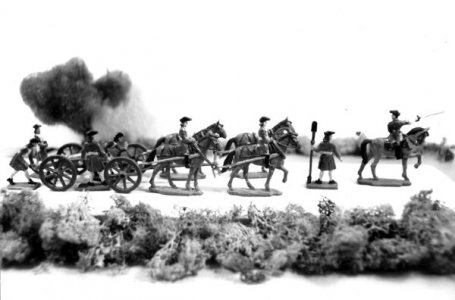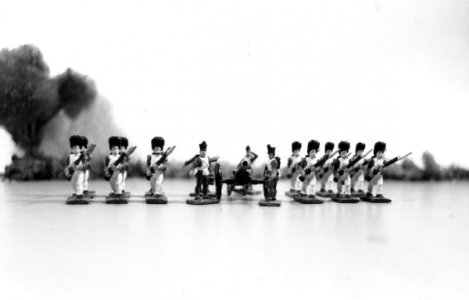-
Welcome back Guest! Did you know you can mentor other members here at H-M? If not, please check out our Relaunch of Hobby Machinist Mentoring Program!
You are using an out of date browser. It may not display this or other websites correctly.
You should upgrade or use an alternative browser.
You should upgrade or use an alternative browser.
Making a Lead Sinker Mold???
- Thread starter TomS
- Start date
- Joined
- Feb 1, 2015
- Messages
- 9,645
I cast a variety of lead jigs and weights. Off hand, I would say that temperature is the culprit.
I use commercial diecast molds that have material removed from the outside to reduce loss of heat. When I pour, I will fill the outside cavities with the molten lead several times before attempting to pout the mold. A higher melt temperature will help as well, Also, fluxing the lead and removing dross prior to pouring. I have seen but do not use some pouring ladles that have a gate at the bottom to prevent dross from entering the mold.
If I were looking at mass production, I would redesign the mold for faster openng and closing. My molds are all hinged and I use a clip to hold them closed while pouring. To clear a mold, I pop the clip, open the mold and give it a light tap to discharge the castings. I would also make the reservoir at the top of each cavity bigger. I milled my molds out to make a common trough so I dont have to hesitate when moving from one cavity to the next.
As others have pointed out, you may need to add a vent to each cavity. It won't take much; a scratch at the bottom of each cavity would do it
I use commercial diecast molds that have material removed from the outside to reduce loss of heat. When I pour, I will fill the outside cavities with the molten lead several times before attempting to pout the mold. A higher melt temperature will help as well, Also, fluxing the lead and removing dross prior to pouring. I have seen but do not use some pouring ladles that have a gate at the bottom to prevent dross from entering the mold.
If I were looking at mass production, I would redesign the mold for faster openng and closing. My molds are all hinged and I use a clip to hold them closed while pouring. To clear a mold, I pop the clip, open the mold and give it a light tap to discharge the castings. I would also make the reservoir at the top of each cavity bigger. I milled my molds out to make a common trough so I dont have to hesitate when moving from one cavity to the next.
As others have pointed out, you may need to add a vent to each cavity. It won't take much; a scratch at the bottom of each cavity would do it
- Joined
- Oct 24, 2014
- Messages
- 208
long time since I made sinkers, but lead is pretty thick molten and the air in those molds has to come out somewhere.
think I would cut a large connecting passageway at the bottom and see if then works ok except for the last one :>)
think I would cut a large connecting passageway at the bottom and see if then works ok except for the last one :>)
- Joined
- Jun 7, 2013
- Messages
- 10,144
It would seem that if large quantities are contemplated, a lead extrusion would make more sense than trying to cast them individually.
It would seem that if large quantities are contemplated, a lead extrusion would make more sense than trying to cast them individually.
You are correct and that's what my client did. He was able to find an extrusion with the desired cross section and now all he has to do is cut the lead sinkers to length.
As has been mentioned you have 2 issues with the mold. On bullet molds they have small vent lines running across the face of the mold. If you go here and look at the face of the mold you can see the vent lines. https://www.lymanproducts.com/brands/lyman/bullet-casting/bullet-moulds/black-powder-moulds.html. The other issue that has been mentioned is that the mold is too cold. When casting bullets it is a fine line between having the mold too hot and not hot enough.
- Joined
- Aug 29, 2013
- Messages
- 1,050
Well, I haven't made sinkers or anything but I have cast hundreds of toy soldiers. I don't think you are going to be able to cast lead down that narrow channel with just a gravity feed. If it's not absolutely essential that the long narrow part be lead, I'd suggest using wire of an appropriate size, flattening the end that goes into the cone, and casting the lead on it.
If you must cast the long narrow part then I agree that you would need vents. Also, if you use a mixture of 80% lead and 20% tin by weight the metal will stay molten longer. And lubricate the mold with talcum powder. Putting plywood backing boards on the outside of the mold would help it to stay warm longer.
Some of my soldiers. The gun crew figures are 40 mm tall and the grenadiers are 25 mm.


If you must cast the long narrow part then I agree that you would need vents. Also, if you use a mixture of 80% lead and 20% tin by weight the metal will stay molten longer. And lubricate the mold with talcum powder. Putting plywood backing boards on the outside of the mold would help it to stay warm longer.
Some of my soldiers. The gun crew figures are 40 mm tall and the grenadiers are 25 mm.


Last edited:
Just saw on TV mysteries of abandoned a tall brick structure used to make musket balls by dropping molten lead...200 feet.
Different approach.
Make a funnel that would allow pouring lead and output side is working wire size.
If placed over some type of oil for coolant then the lead would solidify while in shape of wire.
No clue if it would work.
Using a large soldering iron to keep funnel hot would be needed.
Sent from my SAMSUNG-SGH-I337Z using Tapatalk
Different approach.
Make a funnel that would allow pouring lead and output side is working wire size.
If placed over some type of oil for coolant then the lead would solidify while in shape of wire.
No clue if it would work.
Using a large soldering iron to keep funnel hot would be needed.
Sent from my SAMSUNG-SGH-I337Z using Tapatalk

